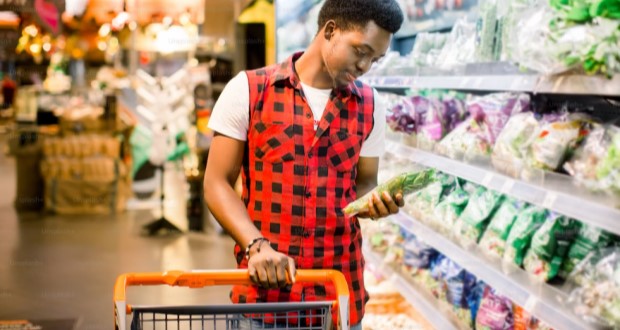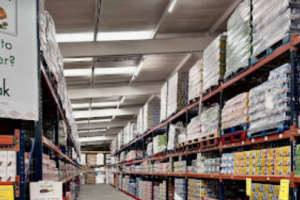The February figure for food and non-alcoholic beverages is the lowest annual rate since January 2022.
The rate has eased for the eleventh consecutive month from a recent high of 19.2% in March 2023, the highest annual rate seen for over 45 years.
Prices rose by 0.2% between January and February 2024, compared with a monthly rise of 2.1% a year ago.
Kris Hamer, Director of Insight of the British Retail Consortium, said: “After a rocky start to 2024, inflation is once again on its way down.
“Food inflation fell once again, to its lowest rate since January 2022, as retailers continue to deliver the best service to their customers and communities. Households benefited from falling prices of fish, crisps and jam.
“While today’s inflation figures will be good news for consumers, government must not be complacent. “Significant costs on the horizon may put renewed pressure on overall inflation in the near future; these include a 6.7% rise in business rates, and reforms to the packaging levy and electrical takeback schemes, all in the context of the biggest rise to NLW on record.
“This will limit investment and drive up costs at a time when many families are still facing a higher cost of living.”
The British Independent Retailers Association said it is ‘hopeful’ to see consumer confidence rising.
Andrew Goodacre, CEO of Bira, which works with over 6,000 independent businesses of all sizes across the UK, said: “It is good to see inflation falling, and hopefully, the decline will have a positive impact on consumer confidence.
“This confidence would be further enhanced if the Bank of England now did the right thing and started to reduce interest rates, especially as energy prices, a factor in inflation, will fall again in April.”
Boudewijn Driedonks, Partner at McKinsey & Company commented: “The Bank of England’s inflation target of 2% is finally in sight. The drop to 3.4% in consumer inflation sees price increases reach their lowest levels in two and a half years, and is the first decisive fall since inflation started flatlining in November.
“The biggest downward pressures are coming from food & non-alcoholic beverages, and restaurants and hotels. The wild price surges of the last four years are softening. For example, bread has come down from over 20% inflation a year ago to 1% today while the sea corridor for Ukrainian exports remains open. And milk, cheese and eggs have shifted from highs of over 30% a year ago to 0.4% today.
“The decline in manufacturing prices that we started to observe earlier this year is trickling through into consumer prices today. While factory gate output prices rose by 0.4%, input prices of manufactured goods have come down 2.7% year-on-year. But overall, we see manufacturing factory prices stabilising.
“We are now approaching an important tipping point. Inflation is tapering off and we see some hopeful signs that growth may be returning. We may be touching down in the soft landing that many were hoping for. But, it also remains hard to plan on any forecast. We have seen alternating increases and decreases in manufacturing input and output prices making it tricky for manufacturers to uphold stable margins.
“So businesses will need to double-down on holistic revenue management and use all the levers at their disposal – pricing, promotion, discounting, and product mix management – to find the right balance between protecting margins and capturing pockets of growth.”
- ONS Consumer Price Index figures
| Year on Year changes | Jan-24 | Feb-24 |
| CPI (overall index) | 4.0% | 3.4% |
| 01 Food and non-alcoholic beverages | 6.9% | 5.0% |
| 02 Alcoholic beverages and tobacco | 12.4% | 11.9% |
| 03 Clothing and footwear | 5.6% | 5.0% |
| 04 Housing, water, electricity, gas and other fuels | -2.1% | -1.7% |
| 05 Furniture, household equipment and maintenance | 0.4% | 0.0% |
| 06 Health | 6.9% | 6.5% |
| 07 Transport | -0.3% | -0.1% |
| 08 Communication | 8.2% | 5.6% |
| 09 Recreation and culture | 5.7% | 5.4% |
| 10 Education | 4.5% | 4.5% |
| 11 Restaurants and hotels | 7.0% | 6.0% |
| 12 Miscellaneous goods and services | 4.5% | 3.6% |
 Talking Retail Grocery and product news for independent retailers
Talking Retail Grocery and product news for independent retailers






